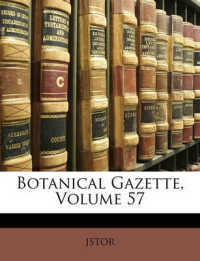Full Description
Urban planning on the five Lusophone African countries - Angola, Cape Verde, Guinea-Bissau, Mozambique, and Sao Tome and PrÃncipe - has so far been relatively overlooked in planning literature. Bringing together a team of leading scholars, this book fills the gap by providing an in-depth analysis of key issues in the history of urban planning and discussing the key challenges confronting contemporary urban planning in these countries. The book argues that urban planning is a non-neutral and non-value free kind of public action and, therefore, ideology, planning theories, urban models and the ideological role urban planning has played are some of the key issues addressed. For that reason, the practice of Urban Planning is also seen as the outcome of a complex interrelationship between structure and agency, with the role of key planers being examined in some of the chapters. The findings and insights presented by the contributing authors confirm previous research on urban planning in the colonial and postcolonial periods in Lusophone African countries and at the same time break fresh ground and offer additional insights as new evidence has been collected from archives and in fieldwork carried out by a new generation of researchers. In addition, it outlines possible directions for future research.
Contents
Chapter 1 Introduction, Carlos NunesSilva; Part I Colonial Urban Planning in Lusophone African Countries; Chapter 2 Colonial Urban Planning in Lusophone African Countries, Carlos NunesSilva; Chapter 3 The City under the First Republic in the Former Portuguese Africa, Ana VazMilheiro; Chapter 4 Empire, Image and Power During the Estado Novo Period, AnaTostões, JessicaBonito; Chapter 5 The Plano de Urbanização da Cidade de Luanda by Étienne de Groër and David Moreira da Silva (1941-1943), TeresaMarat-Mendes, Mafalda Teixeirade Sampayo; Chapter 6 Modern Colonial, Inês LimaRodrigues; Chapter 7 The Prenda District in Luanda, FilipaFiúza, Ana VazMilheiro; Chapter 8 The Growth of Lourenço Marques at the Turn of the Nineteenth Century, Ana CristinaRoque; Chapter 9 A 'High Degree of Civilization', PedroPombo; Part II Postcolonial Urban Planning in Lusophone African Countries; Chapter 10 Postcolonial Urban Planning in Lusophone African Countries, Carlos NunesSilva; Chapter 11 Urban Planning in Angola in the Postcolonial Period, Carlos MiguelGuimarães, SofiaValente, Frederico CostaLeite; Chapter 12 Questioning the Urban Form, FabioVanin; Chapter 13 Postcolonial Transformation of the City of Maputo, David LeiteViana; Chapter 14 Mozambique's Rescaled Dualistic Urbanisation, Céline F.Veríssimo; Chapter 15 The Re-emergence of Urban Renewal in Maputo, SílviaJorge; Chapter 16 Naming the Urban in Twentieth-Century Mozambique, TiagoCastela, Maria PaulaMeneses; Chapter 17 Prepaid Electricity in Maputo, Mozambique, IdalinaBaptista;






